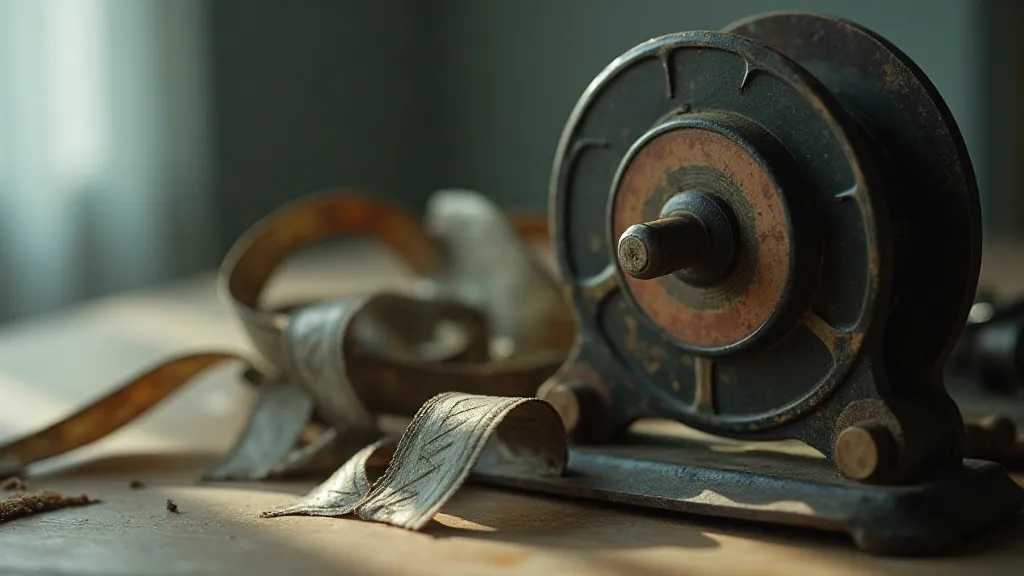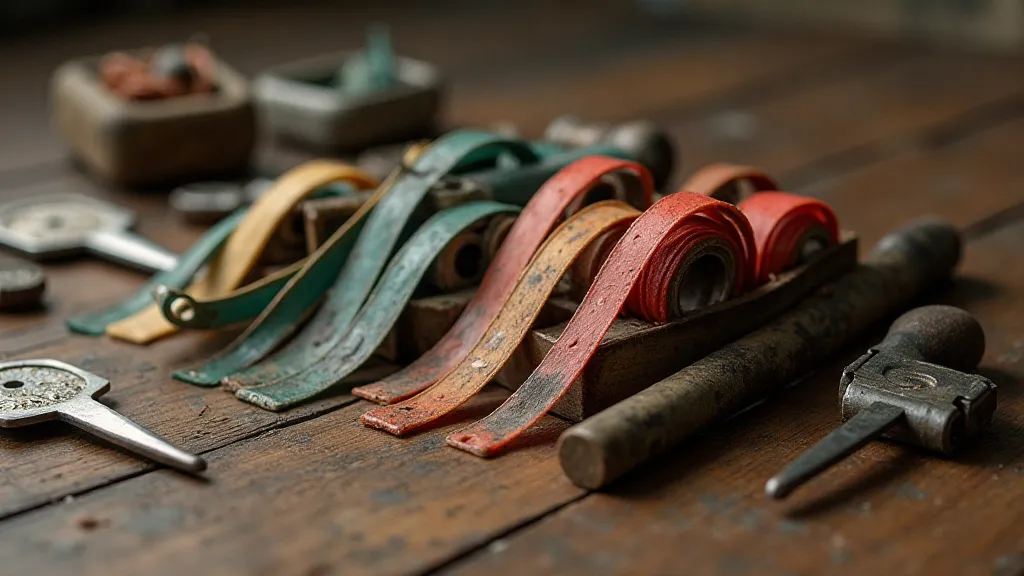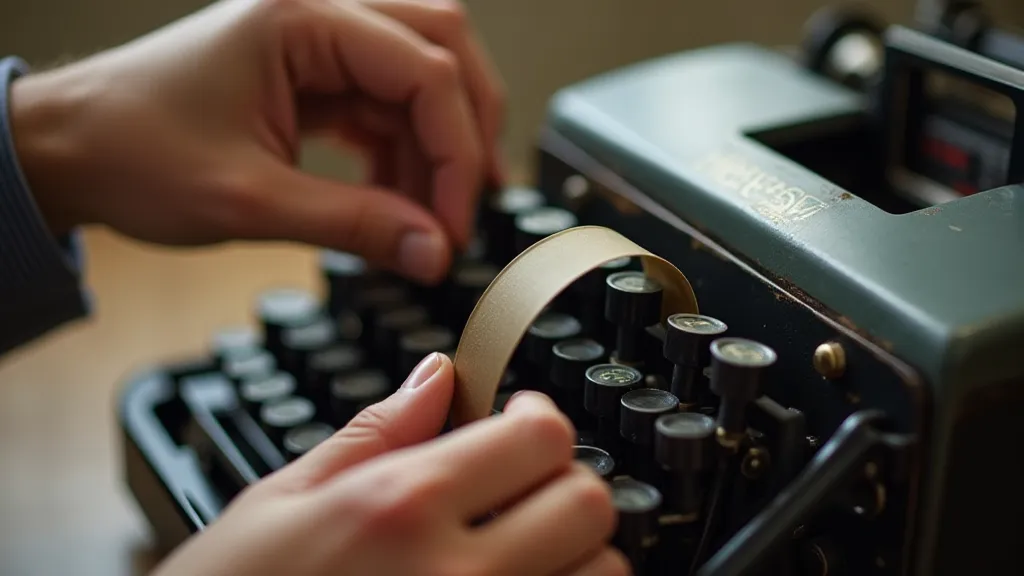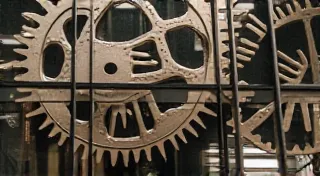Fragments of a Tapestry: Weaving Narrative Threads from Faded Ink
There's a particular scent associated with history – not the dry, dusty smell of a museum, but something richer, more evocative. It's the aroma of aging paper, of dried oil, and, undeniably, of typewriter ribbon. I remember the first time I truly inhaled it, not just noticed it. I was helping my grandfather, a retired journalist, clear out his attic. Sunlight streamed through cracks in the boarded-up windows, illuminating dust motes dancing in the air and revealing a treasure trove of forgotten artifacts: stacks of yellowed newspapers, worn leather briefcases, and a collection of typewriters, each silent sentinel guarding decades of untold stories. Amongst them lay spools of ribbon, their colors muted, their patterns blurred, yet radiating an undeniable allure.
These weren't just office supplies; they were fragments of a tapestry, threads woven with ambition, heartbreak, and the relentless pursuit of truth. Each faded ink mark whispered of deadlines met, stories crafted, and lives touched. My grandfather, a man of few words, simply smiled and said, "Each ribbon holds a story, you know. Sometimes more than the words it prints." That single sentence has resonated with me ever since, shaping my appreciation for these seemingly humble relics of a bygone era.

The Echo of a Style: How Faded Ribbons Inspire
Today, we are bombarded with digital fonts, meticulously crafted for optimal readability and visual appeal. We have endless options at our fingertips, yet sometimes, that very abundance can stifle creativity. There's a certain magic in limitation, a constraint that forces us to find innovative solutions. And a faded typewriter ribbon, with its imperfect ink distribution and often unpredictable patterns, represents the ultimate creative limitation – and, consequently, a powerful source of inspiration.
Consider the way the ink bleeds on a ribbon nearing the end of its life. It creates an organic, almost painterly effect. Instead of striving for perfect alignment and crisp lines, you embrace the imperfection. This stylistic quirk can be consciously replicated in your writing. Imagine a protagonist whose memories are fragmented, their recollections blurring around the edges – a narrative voice mirroring the faded ink of a vintage ribbon. Or a poem that utilizes the erratic patterns of the ribbon to express a sense of chaos and emotional turmoil. Sometimes, the most compelling narratives arise not from flawless execution, but from the beauty of deliberate imperfection, echoing the very qualities of these aged ribbons. The resulting effect might feel like recovering lost fragments of a past era, much like uncovering the stories held within “Chromatic Ghosts: Reclaiming Color in the Monochrome Age”.
Think about the subtle color variations that often appear on older ribbons. Years of exposure to air and light can subtly shift the hue of the ink, imbuing the text with a unique patina. This can be translated into a narrative aesthetic: a story set in a specific era, rendered with a deliberately washed-out or desaturated visual feel. The limitations of the ribbon become an intentional stylistic choice, reinforcing the story’s atmosphere and deepening its emotional resonance. The subtle imperfections, those slight variations in density and color, become character traits of the narrative voice. Beyond mere aesthetics, these faded hues can evoke a profound sense of history and loss, mirroring the way a photograph slowly fades with time – a poignant reminder of the ephemerality of all things.
A Glimpse into the Past: Ribbon History and Craftsmanship
The history of typewriter ribbons is inextricably linked to the evolution of office technology and the very nature of written communication. Early ribbons were often made from silk, painstakingly hand-dyed and woven. These were luxurious items, reflecting the premium nature of early typewriters. As technology advanced, the materials shifted to nylon and later, polyester. The dyeing processes too became more sophisticated, but the inherent fragility of these materials remained. Many older ribbons simply crumbled with time, leaving behind a frustrating trail of ink dust.
The craftsmanship involved in creating these ribbons, even in their later iterations, shouldn’t be underestimated. It wasn’t simply a matter of winding a strip of dyed fabric onto a spool. Achieving consistent ink distribution and preventing the ribbon from tangling required precision and skill. The color palettes, too, were carefully curated – reflecting the aesthetic sensibilities of the era. Think of the vibrant reds and greens of the 1950s, or the more subdued earth tones of the 1970s. Each color tells a story, not just about the ribbon itself, but about the context in which it was used.
Restoring vintage typewriter ribbons is a delicate process, often more about preservation than true restoration. Cleaning a ribbon can sometimes revive the color slightly, but aggressive cleaning can easily damage the fragile fabric. The very act of attempting to bring a ribbon back to its original state, to erase the marks of time, feels almost sacrilegious. The value lies not in bringing it back to pristine condition, but in appreciating its age and the history it embodies. The narrative potential, the echoes of the past embedded within its fibers, are diminished by an attempt at absolute restoration. There's a profound beauty in embracing the decay, in recognizing that the imperfections are the very essence of its story, echoing the themes explored in “The Last Paragraph: Reflecting on the Ephemerality of Typewriter Ribbons”.

Beyond the Words: Connecting with a Legacy
Collecting vintage typewriter ribbons isn't simply about acquiring objects; it's about connecting with a legacy. It's about understanding the role these seemingly small items played in shaping our world. Think of the countless letters, reports, and novels that were produced using these ribbons. Each spool holds the potential to unlock a forgotten story, a glimpse into the past.
Beyond the tangible object, the experience of handling a vintage ribbon offers a sensory connection to a different era. The feel of the fabric between your fingers, the subtle scent of aging ink – these details transport you back in time, fostering a deeper appreciation for the craftsmanship and the ingenuity of the past.
My grandfather passed away some years ago, but his words, and the memory of that attic filled with forgotten treasures, remain with me. I still have a few of those ribbons, carefully stored away. They are a tangible reminder of his love for storytelling, and a constant source of inspiration for my own writing.
The act of preserving these relics, of meticulously cataloging their colors, their materials, and their histories, feels like an alchemical pursuit – transforming the decay of time into narrative gold. The patterns and possibilities suggested by these remnants, coupled with the challenge of interpreting their silent messages, offers boundless creative fodder, a reflection of the themes explored within “The Alchemist’s Legacy: Transforming Decay into Narrative Gold”. Understanding the process of creation, the careful choices made by the ribbon's creators, allows us to approach our own creative endeavors with a greater sense of intention and appreciation.

Consider the intricate designs often incorporated into the ribbons themselves, subtle patterns woven into the fabric that add another layer of visual interest. These details are often overlooked, lost in the rush of modern life. Taking the time to appreciate these nuances, to unravel their hidden meanings, is akin to joining the “Tapestry Weaver’s Guild: Patterns and Possibilities of Ribbons,” carefully piecing together fragments of the past to create a richer understanding of the present.
The ongoing preservation and study of these artifacts are critical to ensuring that their stories are not lost to time. They serve as tangible reminders of a bygone era, offering a unique window into the lives and experiences of those who came before us. By embracing the imperfections, by celebrating the decay, we can unlock a wealth of knowledge and inspiration.
The enduring power of these objects lies not only in their aesthetic appeal but also in their ability to evoke a sense of nostalgia and longing for a simpler time. They remind us of the value of slowing down, of appreciating the beauty of imperfection, and of connecting with the stories that shape our lives. They encourage us to reconsider our relationship with technology and to embrace the tangible, the imperfect, and the beautiful.





